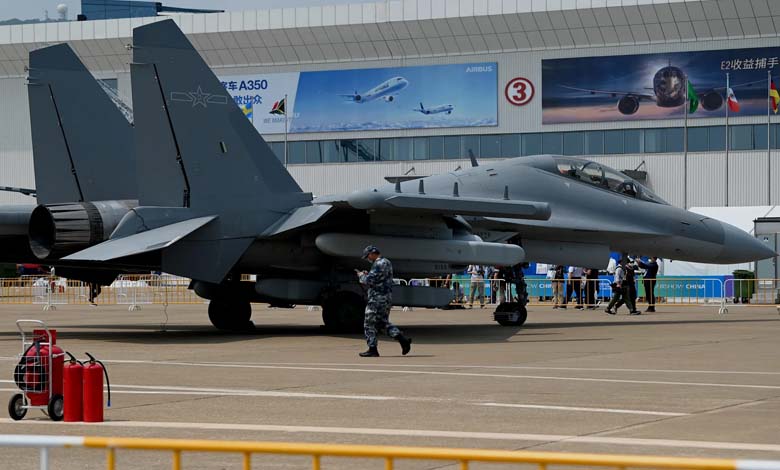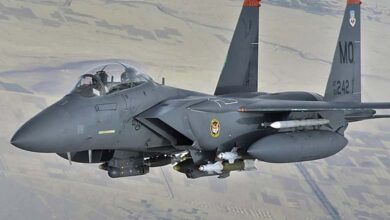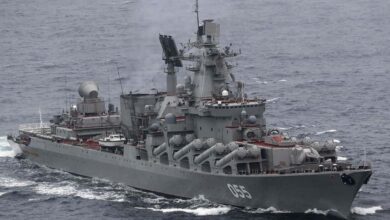Spectacular Progress: How Did China Build Its Air Power on Its Own?

China is currently experiencing a pivotal moment, having made significant strides in independently developing its air power—reshaping military and political dynamics on a global scale.
Over the past three decades, the development of Chinese fighter jets has undergone a remarkable transformation. Once entirely reliant on Soviet designs, China now produces domestically advanced aircraft, some of which are beginning to rival American models, according to The National Interest magazine.
-
J-20s Now Guarding Beijing’s Skies: A Strategic Leap in China’s Air Force Capabilities
-
Chinese J-10C vs. Russian MiG-29M: Which Fighter Jet Is Best for Egypt?
This evolution is the result of a systematic and coordinated effort, aimed at completing China’s emerging strategy to challenge American air superiority and influence in the Indo-Pacific region.
Until the 1990s, the Chinese Air Force (PLAAF) was largely ineffective, relying heavily on Soviet aircraft like the MiG-19 and MiG-21, and was limited to modest operations such as local air defense.
In direct comparison with modern American jets, the Chinese Air Force was far behind. The U.S. was already deploying F-15s, F-16s, F/A-18s, F-117s, and B-2s, with the F-22 on the horizon.
-
The “Double-Tailed Scorpion”: An Impressive Chinese Military March
-
American concerns about the establishment of a Chinese Military Base in Oman
However, throughout the 1990s and early 2000s, China began narrowing this capability gap, initially by purchasing advanced Russian aircraft such as the Su-27 and Su-30, and later by developing indigenous models like the Shenyang J-11.
This led to a PLAAF fleet with improved speed, range, and weapon systems. Still, China lagged behind the U.S., particularly in radar technology, stealth features, and avionics.
According to The National Interest, China’s continued efforts throughout the 2000s led to more locally designed fighter jets, each featuring increasing levels of sophistication.
-
China bares its teeth… A major production leap for stealth fighters
-
Decoding China’s Enigmatic Fighter Jet: A Triple-Power Revolution in the Sky
A key milestone was the Chengdu J-10—a single-engine multirole fighter comparable to the F-16. It marked China’s first domestically produced fourth-generation fighter.
The development of the J-10 represented a turning point, showcasing China’s ability to build a high-performance aircraft with advanced avionics, integrated systems, and superior aerodynamics.
However, the J-10 still falls short of its American counterparts in terms of stealth and sensor fusion.
-
“The White Emperor”: Discover China’s Revolutionary Sixth-Generation Fighter
-
Su-57 and Zircon: A Game-Changing Equation in Russia’s Strategic Deterrence
To bridge this gap, China developed two fifth-generation fighters, becoming one of only three countries in the world to do so: the Chengdu J-20 and the Shenyang FC-31.
With its twin engines and advanced capabilities, the J-20 is designed for long-range interception, penetration of air defenses, and achieving air superiority. It features stealth design, internal weapons bays, and a sophisticated radar system.
China’s rapid and impressive technological leap in fighter jet development complements its increasingly assertive foreign policy.
-
Submarines, Missiles, and Fighters: A Comparison of Strategic Weapons between China and the United States
-
Stealth Fighter V: A European Birth Beyond the American Umbrella
From the U.S. perspective, the recent strengthening of China’s combat aircraft fleet is a game changer in the Indo-Pacific region. While American war planners once assumed unchallenged air dominance, the U.S. must now factor in the capabilities of China’s growing air power.
China’s air force could potentially deny access to its airspace—and even extend its influence far beyond its national borders.
-
China Changes the History of Warfare with a Non-Nuclear Warhead
-
The Buried Hell… What Is China Hiding Beneath Its Mountains?












